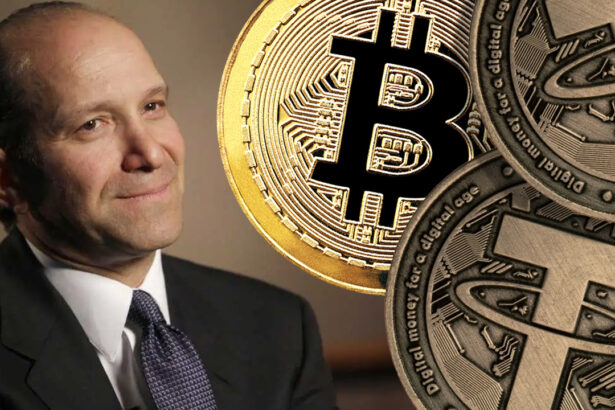As of 2024, the convergence of cryptocurrency and traditional finance is reshaping the global financial landscape. Once seen as an obscure digital novelty, cryptocurrencies have evolved into a multi-trillion-dollar market that demands attention from governments, financial institutions, and investors. The rapid pace of innovation and increasing adoption by institutional players have cemented crypto’s place in the modern financial ecosystem. This article explores the latest trends in the intersection of crypto and finance, regulatory challenges, the role of decentralized finance (DeFi), and what the future might hold for digital assets in a rapidly changing world.
The Growing Role of Institutional Investors
One of the defining characteristics of the crypto market today is the growing interest and participation of institutional investors. In the early years of Bitcoin and other cryptocurrencies, adoption was largely driven by individual enthusiasts and retail investors. However, the landscape has changed dramatically since then. Today, major institutional players, including hedge funds, asset managers, and pension funds, are entering the space. This shift is largely fueled by several factors:
Maturation of Crypto Markets
Over the past few years, cryptocurrency markets have matured. Financial institutions now recognize Bitcoin, Ethereum, and other leading cryptocurrencies as legitimate assets. Bitcoin, often called “digital gold,” is increasingly viewed as a store of value, while Ethereum’s blockchain underpins a vast ecosystem of decentralized applications (dApps) and smart contracts.
Bitcoin ETFs
The launch of Bitcoin Exchange-Traded Funds (ETFs) in countries like the United States, Canada, and Brazil has opened the door for a broader range of investors to gain exposure to cryptocurrencies. ETFs provide a regulated and accessible way for institutional investors to invest in Bitcoin without directly holding the asset. In the U.S., approving Bitcoin spot ETFs has been a highly anticipated development, with major players like BlackRock and Fidelity vying for approval. Launching these ETFs would likely trigger a surge in institutional interest and significantly boost market liquidity.
Crypto Custody Services
The rise of secure and regulated crypto custody services offered by companies like Coinbase, Fidelity Digital Assets, and Anchorage has alleviated concerns about the security of digital assets. These services enable institutional investors to securely store large amounts of cryptocurrency, addressing one of the key barriers to adoption.
DeFi Integration
Institutional interest in decentralized finance (DeFi) is also on the rise. While DeFi was once the domain of retail users and crypto-native developers, institutions are beginning to explore its potential to revolutionize traditional financial services, including lending, borrowing, and asset management.
Regulatory Developments and Challenges
As cryptocurrencies gain mainstream acceptance, regulators worldwide are grappling with how to regulate this new asset class effectively. Striking a balance between fostering innovation and protecting consumers has proven to be a complex challenge.
U.S. Regulatory Landscape
In the United States, uncertainty and fragmentation have marked the regulatory environment surrounding crypto. Multiple agencies, including the Securities and Exchange Commission (SEC), the Commodity Futures Trading Commission (CFTC), and the Financial Crimes Enforcement Network (FinCEN), claim jurisdiction over different aspects of the crypto industry. The result has been a patchwork of regulations that can confuse industry participants.
SEC vs. Crypto Companies
The SEC has been particularly aggressive in its enforcement actions against crypto companies, particularly those conducting Initial Coin Offerings (ICOs) or offering tokens that it deems unregistered securities—in 2023, the SEC filed lawsuits against several prominent exchanges, including Binance and Coinbase, accusing them of violating securities laws. These actions have heightened the need for clearer regulations differentiating between utility tokens, power decentralized networks, and security tokens, which resemble traditional financial instruments.
CFTC and Stablecoins
The CFTC has focused on regulating derivatives markets and ensuring the integrity of cryptocurrency futures and options trading. Stablecoins pegged to traditional currencies, like the U.S. dollar, have also come under regulatory scrutiny. In 2024, the U.S. Congress is expected to introduce new legislation to regulate stablecoin issuers and ensure that sufficient reserves back these assets.
Global Regulatory Efforts
Outside the U.S., regulators in Europe, Asia, and other regions have taken varied approaches to crypto regulation.
Europe
The European Union has made significant strides in regulating cryptocurrencies through its Markets in Crypto-Assets (MiCA) framework. MiCA, which was finalized in 2023, provides comprehensive regulations for crypto-asset service providers and issuers, ensuring that they operate within a clear legal framework. The regulation also addresses consumer protection, anti-money laundering (AML), and transparency issues. The introduction of MiCA is expected to bolster the EU’s position as a global leader in the regulation of digital assets.
Asia
Countries like Japan and Singapore have embraced cryptocurrencies with relatively clear regulatory frameworks in Asia, while China has continued its strict crackdown on crypto trading and mining. Japan, in particular, has positioned itself as a hub for blockchain innovation, with the government and financial institutions collaborating on various crypto-related projects. Singapore has also been proactive in attracting crypto businesses by offering a favorable regulatory environment and tax incentives.
Emerging Markets
In emerging markets, cryptocurrencies have gained significant traction as a means of remittance and an alternative to unstable local currencies. Countries in Latin America, such as El Salvador, have even adopted Bitcoin as legal tender. However, these moves have not been without controversy, as critics argue that the volatility of cryptocurrencies makes them unsuitable as a national currency.
The Role of DeFi and Tokenization
Decentralized finance (DeFi) has been one of the most disruptive trends in the financial sector in recent years. DeFi leverages blockchain technology to replicate traditional financial services such as lending, borrowing, and trading in a decentralized, permissionless manner.
DeFi’s Growing Ecosystem
The DeFi ecosystem has grown exponentially since its inception, with total value locked (TVL) in DeFi protocols surpassing $100 billion in 2022. Popular DeFi platforms like Aave, Uniswap, and MakerDAO allow users to participate in financial activities without intermediaries like banks or brokers. DeFi protocols operate through smart contracts on blockchains, enabling more transparent and efficient transactions.
However, DeFi is not without its risks. The lack of regulation in the DeFi space has made it a target for hacks, scams, and other illicit activities. In 2023, several high-profile DeFi exploits resulted in millions of dollars in user losses. As a result, regulators are now focusing on the DeFi space, with some advocating for increased oversight to protect users.
Tokenization of Real-World Assets
Tokenization, creating digital representations of real-world assets on a blockchain, is another trend transforming the financial landscape. Tokenized assets can range from real estate and commodities to stocks and bonds. Tokenization offers several advantages, including increased liquidity, fractional ownership, and faster settlement times.
For example, tokenized real estate allows investors to buy and sell fractional shares of properties, lowering the barrier to entry for real estate investment. In the future, tokenized assets could revolutionize traditional markets, making investing in a wide range of assets easier for individuals and institutions.
Conclusion
The relationship between cryptocurrency and finance is still evolving, but the trend is clear: digital assets are here to stay. As more institutional players enter the market and as regulators work to establish clearer rules, the crypto space will continue to mature. In 2024 and beyond, we can expect to see further integration of crypto into traditional finance, driven by innovations in DeFi, tokenization, and blockchain technology. While challenges remain, the potential for growth and transformation is immense.






